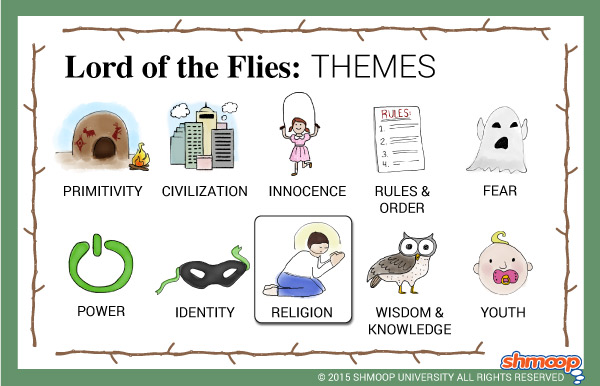 (Click the themes infographic to download.)
(Click the themes infographic to download.)
Lord of the Flies can be read, at least in part, as a religious allegory. It features the character Simon as a Christ-figure who is killed by the other boys. Following this train of thought, the island can be seen as the Garden of Eden, before it was corrupted by mankind and his evil activities (as represented by the beast) (the “snake-thing”). On a less complex level, there are many generally religious or superstitious images in the novel: Jack as the god, garlanded and sitting on a log as he presides over his feast, the name “the Lord of the Flies,” the rituals that the boys engage in as they replay the pig hunts over and over, and the sacrifice that they leave for the beast. The pig head, impaled on a stake, seems to be a kind of god itself. Scholars disagree as to whether the novel argues for Christianity and civilization, in opposition to “primitive” rituals, or whether Lord of the Flies criticizes any kind of religion, organized or no.

Questions About Religion
- If Simon can be seen as a Christ-figure in Lord of the Flies, what Biblical characters might Ralph and Jack be compared to?
- What is the difference between religion and superstition in Lord of the Flies?
- Is Simon aware of all the religious symbolism that we claim he’s associated with?
Chew on This
The pig hunts that the boys perform in Lord of the Flies are presented as religious ritual; in this way, Golding critiques organized religion.